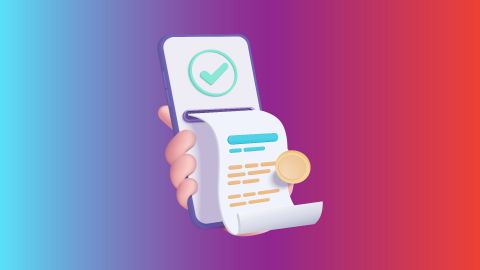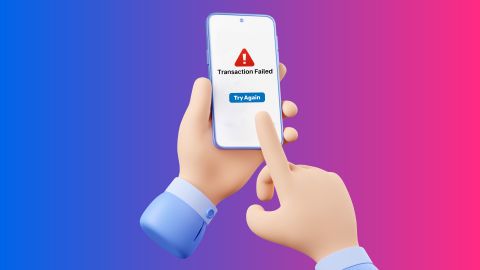Know about unit computation, slab-wise prices for domestic and residential consumption, higher tariffs for commercial customers, and possible subsidies to understand Kurnool’s power charges.
What are the electricity charges in Kurnool?
-
The Kurnool Electricity Board is part of the Andhra Pradesh Southern Power Distribution Company Limited (APSPDCL). It manages the electricity supply in the Kurnool district of Andhra Pradesh. The board oversees the distribution of power to various sectors, including residential, commercial, and industrial. Its responsibilities include maintaining and upgrading the electrical infrastructure, minimising power outages, and improving customer service.
Additionally, customers can conveniently pay their electricity bills using theBajaj Pay BBPS platform on Bajaj Finserv. The BBPS platform on BajajFinserv is a secure andaccessible avenue for users to handle their APEPDCL electricity bill payment effortlessly. It is more than just connectivity; it is about making every part of your experience as smooth as your internet connection.What are electricity charges?
Electricity charges refer to the amount consumers pay for the electricity they use. These charges are typically calculated based on the number of units (kilowatt-hours or kWh) consumed during a billing period. The tariff structure in Kurnool is tiered. Other factors, such as fixed charges, surcharges, and taxes, also contribute to the final electricity bill. For residents in Kurnool, managing these charges involves understanding the various components that make up the bill.
Here is a table summarising the electricity unit rates in Kurnool :Unit consumed Rate per unit (in Rs.) 50 1.45 per unit 100 2.60 per unit 300 5.16 per unit 400 5.86 per unit 500 6.39 per unit 800 7.72 per unit 900 7.97 per unit 1000 8.17 per unit How to calculate domestic charges in Kurnool
Domestic electricity charges in Kurnool are calculated based on a multi-tiered tariff structure. This structure incentivises energy conservation by charging higher rates for higher consumption levels.
1. Determine consumption slabs: Like domestic charges, residential charges are also based on consumption slabs. However, residential consumers may have different slab rates. It occurs if they consume more energy or have a higher contracted load.
2. Apply residential tariffs: Multiply the units consumed within each slab by the applicable residential tariff rate. These rates may differ slightly from domestic rates and reflect the higher energy demands of residential properties.
3. Fixed and demand charges: Residential consumers might also be subject to demand charges based on the peak load during a billing cycle. These charges are in addition to the standard fixed charges.
4. Surcharges and taxes: Like domestic charges, residential bills include surcharges and taxes. It is calculated as a percentage of the total consumption and demand charges.
For a hassle-free bill payment experience, you can use online platforms like electricity bill payment services.How to calculate an APEPDCL electricity bill
Calculating an APEPDCL electricity bill involves a few simple steps:
Enter your consumption: Note the total units consumed during the billing period.
Apply the relevant tariffs: Use the slab rates applicable to your consumption level.
Add fixed charges: Include any fixed charges based on your connection type.
Include surcharges and taxes: Finally, calculate any applicable surcharges and taxes.
For an accurate and easy calculation, use the APEPDCL electricity bill calculator.How to check an APEPDCL electricity bill
Checking your APEPDCL electricity bill is a straightforward process that can be done online. Here is how you can do it:
Visit the APEPDCL website: Go to the official APEPDCL website.
Navigate to the billing section: Look for the section dedicated to bill payments or viewing.
Enter your details: To retrieve your bill, provide your service number or unique consumer ID.
View or download: Once your bill is displayed, you can view the details or download it for your records.
Checking your bill regularly can help you track your energy usage and manage your expenses more effectively.
-
-
Recharge and Pay Bills
Mobile Prepaid
Mobile Postpaid
Broadband Bill Payment
Electricity Bill Payment
Bajaj Finserv App for All Your Financial Needs and Kurnoolls
Trusted by 50 million+ customers in India, Bajaj Finserv App is a one-stop solution for all your financial needs and Kurnoolls.
You can use the Bajaj Finserv App to:
You can use the Bajaj Finserv App to:
- Apply for loans online, such as Instant Personal Loan, Home Loan, Business Loan, Gold Loan, and more.
- Explore and apply for co-branded credit cards online.
- Invest in fixed deposits and mutual funds on the app.
- Choose from multiple insurance for your health, motor and even pocket insurance, from various insurance providers.
- Pay and manage your bills and recharges using the BBPS platform. Use Bajaj Pay and Bajaj Wallet for quick and simple money transfers and transactions.
- Apply for Insta EMI Card and get a pre-approved limit on the app. Explore over 1 million products on the app that can be purchased from a partner store on Easy EMIs.
- Shop from over 100+ brand partners that offer a diverse range of products and services.
- Use specialised tools like EMI calculators, SIP Calculators
- Check your credit score, download loan statements and even get quick customer support—all on the app.
Frequently asked questions
What is the cost of 1 unit of electricity in Kurnool?
In Kurnool, the cost of one unit of electricity varies with consumption: Rs. 1.45 for up to 50 units, Rs. 2.60 for 100 units, Rs. 5.16 for 300 units. It is Rs. 5.86 for 400 units and Rs. 6.39 for 500 units. It is Rs. 7.72 for 800 units, Rs. 7.97 for 900 units, and Rs. 8.17 for 1000 units.
How is the Kurnool electricity bill calculated?
The Kurnool electricity bill is calculated based on consumption slabs. Fixed charges and subsidies, if applicable, are also considered.
How do consumer charges affect my electricity bill?
Consumer charges in Kurnool are added to the electricity bill based on the consumption slab. For example, fixed charges of Rs. 10/kW/month and customer charges (which vary by slab) are included for domestic consumers. An electricity duty of 0.06 paise per unit is also applied, contributing to the total bill amount.
How can I minimise customer charges on my electricity bill?
Manage your consumption to minimise customer charges on your electricity bill in Kurnool. Ensure you are in the lowest applicable tariff slab. Additionally, paying bills on time and using online payment methods help avoid late fees.
Are there any government incentives for energy-efficient appliances?
Yes, the Indian government offers incentives for energy-efficient appliances. The Bureau of Energy Efficiency (BEE) promotes these through the Standards and Labelling program. It includes fiscal and monetary incentives to encourage the adoption of higher-rated energy-efficient appliances, resulting in significant consumer savings.
Show More
Show Less




